The difference in frequency, depending on whether 50 Hz or 60 Hz is used, can be a hurdle for electrical professionals who use different standards in different areas. Even if it is a matter of bringing in amenities, moving transportation, or making the systems compatible, the importance of knowing how to handle this is significant. This manual goes into the simplest details of 50 Hz to 60 Hz conversion and provides practical steps for anyone wanting to navigate the labyrinth of frequency adaptation successfully. As the end-reader of this article, you will get to be well and conversant with the devices, methods, and other factors that facilitate the conversion between two frequencies without any hitches. The means to achieving appropriate performance across the divergent power systems is through deep probing and checking.
Understanding of Frequency Converter
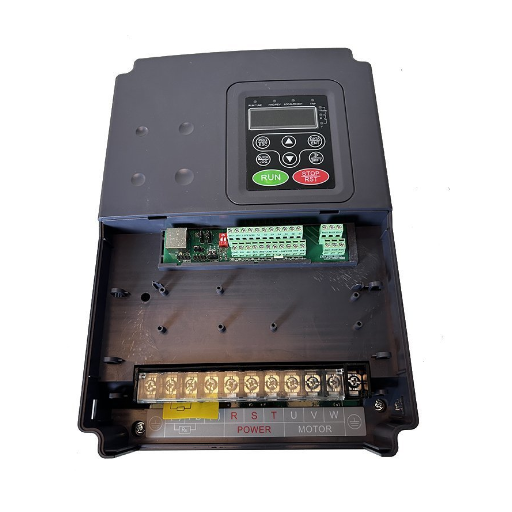
Frequency converters are equipment designed to adapt the electrical power supplied by the mains to the equipment, ensuring compatibility with different power systems. Frequency converters usually convert the input frequency, for example, 50 Hz or 60 Hz, to the required output frequency that meets the demands of the particular devices or applications. This is a rather significant factor, given that in cases where equipment belonging to a frequency standard has to go into operation in a region where another standard is in use, operation could be impossible without it. When this is the case, frequency converters help establish compatibility, thus preventing performance problems and, as a result, maintaining equipment, ensuring safety, and guaranteeing proper energy use in variable commercial and industrial environments.
What is a Frequency Converter?
A frequency converter is an electronic device that is used to alter the frequency of an alternating current (AC) to meet the specific requirements of devices or systems. Initially, it converts AC to direct current (DC), and then, using advanced electronics, it generates AC at the desired output frequency. Not only are they clean but also equipped with the latest technology, such as a digital control system and energy-efficient modules, making them highly reliable across a broad spectrum of applications. The use of these converters is a great way to enable industries like manufacturing, aviation, and renewable energy (all sectors in which equipment specificity usually demands accurate adjustment of the current flow frequency) to adapt quickly when necessary. Additionally, the variant of the electric load results in a smaller portion of the total load. The converters reduce the motor or other equipment’s energy consumption by switching off the unit when the load changes, and they also improve the overall power factor. As a result, it is a win-win situation for both the company and the environment.
Importance of Frequency Conversion
One of the most essential factors driving the modern development of technology and the industrial sectors, and at the same time preventing the breakdown of machines equipped with different power systems, is frequency conversion. The global power grids work on different standard frequencies, for example, 50 Hz and 60 Hz, and therefore, frequency converters not only save the machinery and devices to adapt according to their own regional specifications but also support the globalization of industries mainly by ensuring compatibility, cheaper equipment costs, and thus smaller and larger international trade. Furthermore, the transformation of frequency has a magical effect on hydraulic and electric motors, as it makes them tailored to the speed and performance of the conversion, which, in turn, reduces energy consumption, mechanical wear, and the replacement period. Advanced frequency converters have become part of the smart revolution. They are thus more precise, more complex in operation, and currently the most optimal machines in the field, not only for control and monitoring but also as an undeniable must-have in the transportation, healthcare, and renewable energy sectors.
Key Applications of 50 to 60 Hz Converters
Industrial Equipment Compatibility
It is not unusual for industries to rely heavily on machinery and equipment designed to operate at a specific frequency. For example, many European nations use 50 Hz as their standard, while the US uses 60 Hz. Converters are designed to ensure the smooth operation of imported or exported equipment, regardless of regional frequency standards.
Aerospace and Defense
To maximize aircraft system performance, aerospace operations need to use equipment with frequencies other than the standard 400 Hz. This technology is critical and provides the aircraft with advanced, reliable systems for functions such as navigation, communication, and more.
Renewable Energy Systems
Wind and solar power systems, as new sources of energy, are major variable-frequency producers. They therefore come with 50 to 60 Hz converters to stabilize and connect the output to the conventional power grid, thereby ensuring a more reliable power supply.
Transportation Infrastructure
Modern railway systems, along with metro grids, require 50 to 60 Hz converters for engine control and signaling. They also take into account differences in local electricity grids to enable international or inter-regional operation.
Healthcare and Medical Equipment
Hospitals and healthcare facilities depend on highly sensitive equipment, namely MRI machines and CT scanners, which require a specific frequency to operate. The role of frequency converters in ensuring that these devices remain in working order and do not experience problems due to a frequency difference is crucial.
Maritime Applications
Ships usually have to operate in areas where the shore power frequency differs from their onboard systems. With converters that operate in the 50-60 Hz range, ships can tie into the local power supply at the port where they are docked, thereby reducing emissions and fuel consumption.
Types of Frequency Converters
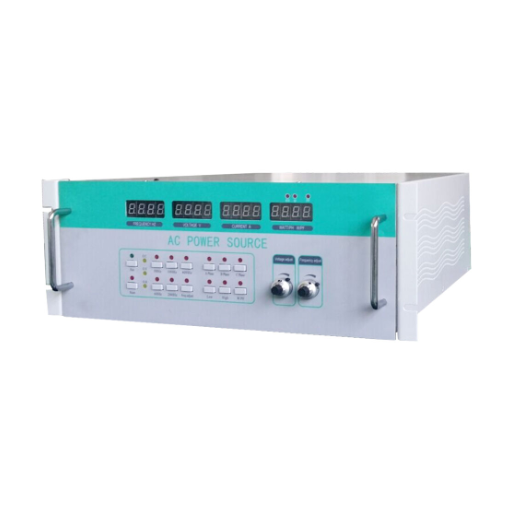
Rotary Frequency Converters
These converters use a rotating machine to convert the input frequency to the desired output frequency. They work well in all conditions and are often found in factories.
Static Frequency Converters
In these converters, the frequency change is effected by solid-state electronics, such as semiconductors, at high frequencies. They are the most recent and most common applications where exact control is a must, apart from having the smallest form factor, being power-efficient, etc.
Motor-Generator Units
A combination of a motor and a generator changes mechanical power frequencies in synchronous motors and other machines. Nowadays, this method is somewhat out of fashion; nevertheless, in some instances, one still has to use it when both frequency and voltage must be converted.
Single Phase vs. Three Phase Converters
| Parameter | Single Phase Converter | Three Phase Converter |
|---|---|---|
| Input Phases | Single power phase | Three power phases |
| Power Output | Lower power capacity | Higher power capacity |
| Efficiency | Less efficient | More efficient |
| Cost | Lower cost | Higher cost |
| Complexity | Simple design | Complex design |
| Application | Small-scale appliances | Large industrial equipment |
| Power Quality | Fluctuations possible | Stable power supply |
| Size | Compact, lightweight | Larger size |
| Maintenance | Easier to maintain | Requires skilled maintenance |
| Startup Torque | Limited torque | High startup torque |
220V and 110V Frequency Converters
Frequency converters can ensure consistent compatibility between devices and power systems that operate under different voltage and frequency standards, for instance, 220V/50Hz and 110V/60Hz. No doubt, these devices have become indispensable for ensuring the safe and reliable operation of electrical equipment and, at the same time, preventing damage that may result from a mismatched power supply.
New-age converters are equipped with state-of-the-art technology that ensures precise control of voltage and frequency changes and can therefore meet the requirements of all industry sectors and applications. In one way or another, they are the first to start and the last to go off in an industrial situation, powering machinery or heating, ventilating, and air conditioning (HVAC) systems. At the same time, in residential and commercial settings, they are the backbone of appliances, home care systems, and audio-visual equipment.
Some of the main advantages of exceptional frequency converters include, to name a few, protection against overloading, energy conservation, reduced device size, and ease of operation. Fortunately, thanks to modern design, several converters are among the most durable, with low noise levels and available with specific customization features to better align with unique operational requirements. These quality improvements are turning the converters from a nice-to-have to an invaluable part of international mobility, global manufacturing, and cross-border equipment scenarios.
Variable Frequency Drives
Variable Frequency Drives (VFDs) are a basic requirement for increasing the productivity of electric motors by regulating their speed and torque. With VFDs, it is possible to achieve excellent energy efficiency and a long equipment life by resetting the motor’s input frequency and voltage. Industries that depend on motors, such as production, HVAC systems, and water treatment plants, achieve significant gains through the smooth integration of VFDs into their daily operations.
New VFD technology has been particularly focused on features such as predictive maintenance, wireless connectivity, and adaptive algorithms, which improve machine reliability and, respectively, fuel and power efficiency. What is more, nowadays, VFDs are primarily energy-efficient units that often lead to significant reductions in power bills, thereby lowering operational costs and having a positive impact on the environment. These innovative solutions have made VFDs a substantial part of the industry and customer-facing use.
How 50 to 60 Hz Converters Work
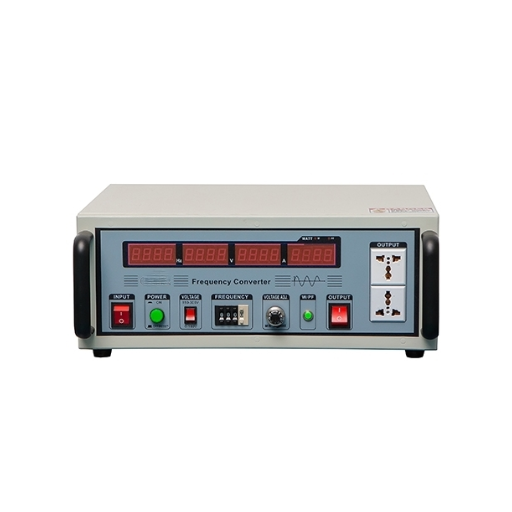
The working principle of converters that convert 50 to 60 Hz is to regulate the electric power supply frequency for a device. Usually, the rectifiers and inverters are the names of electronic circuits known to be used for this purpose. Initiation begins with the rectifier, which converts the supplied alternating current (AC) to direct current (DC). The next step is feeding the obtained direct current into the inverter, which in turn converts the current signal to a specific frequency AC, e.g., from 50 Hz to 60 Hz. Present-day converters mainly feature accurate control systems to ensure stability and accuracy in the output frequency, and hence, equipment requiring power standard compatibility is significantly dependent on them.
Understanding AC Power and Frequency
The power frequency of AC plays a significant role in the operation and energy utilization of almost all appliances and machines. In the world, the standard frequencies are 50 Hz or 60 Hz, while different regions use one or the other for historical and infrastructural reasons. A reliable frequency ensures that the generators are continuously operating in sync and that there are no interruptions in the distribution of electrical power. Continuously changing the frequency can cause multiple issues, including motor overheating, decreased efficiency, or, in extreme cases, the destruction of very sensitive electronic components.
There has been a line of developments in energy technologies that have made the need for accurate frequency control even more pronounced. The grids are affected by the variability of power supply from renewable energy sources, such as wind and solar power, and, in modern electrical power systems, frequency control is considered one of the most critical factors. Techniques such as advanced frequency monitors and innovative grid systems have become tools to keep the system stable, no matter the ups and downs of load and generation. It is now widely accepted that a constant power frequency is not only a matter of technology but also plays a significant role in ensuring energy reliability and supporting the world’s efforts towards sustainability.
Components of a Frequency Converter
| Component | Description |
|---|---|
| Rectifier | Converts AC to DC for further processing. |
| DC Link | Stores and smoothens the DC voltage. |
| Inverter | Converts DC back to AC at desired frequency. |
| Control Unit | Manages voltage, frequency, and power output. |
| Cooling System | Regulates temperature for efficient operation. |
| Filters | Reduces harmonic distortion and noise. |
| Input/Output Interfaces | Connects the converter to external systems. |
| Sensors | Monitors voltage, current, and temperature parameters. |
| Protective Devices | Prevents damage from overloads or short circuits. |
| Enclosure | Houses and protects internal components from environmental factors. |
Conversion Process: 50Hz to 60Hz
Commonly, the frequency change from 50Hz to 60Hz has to be done using a motor generator set or a frequency converter. The whole transaction is initiated by rectifying power, which comes in as the usual 50Hz alternating current (AC), and converting it to 60Hz direct current (DC). The DC power is inverted back to 60Hz as an AC output using advanced inverters. That is, all modern frequency converters have a stable voltage and minimal harmonic distortion thanks to their precision control and algorithmic features.
This conversion is significant because it helps one align the equipment’s operation with regional power standards, as the frequencies used by different parts of the world vary. For instance, the vast majority of industrial and commercial systems in the Americas and some Asian regions operate at 60Hz, while in many European, African, and Asian countries the standard is 50Hz. Shifting from one frequency to another enables businesses and manufacturers to operate machinery more or less continuously, maintain compatibility, and reduce downtime.
Benefits of Using 50 to 60 Hz Converters
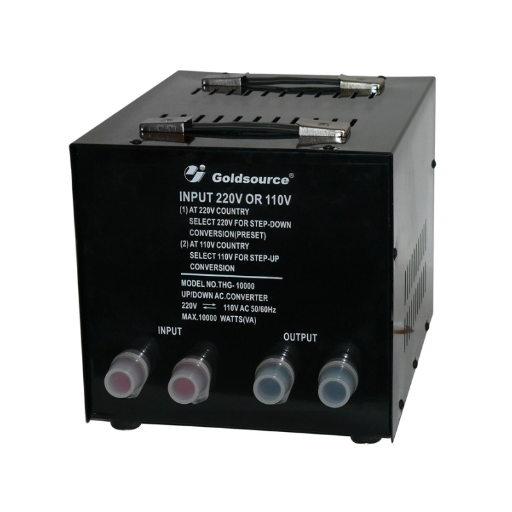
- Enhanced Equipment Compatibility: These converters guarantee smoother equipment operation even when machines and devices are intended for different frequency standards in other locations, ensuring global compatibility.
- Reduced Downtime: By efficiently handling frequency differences, converters reduce operating disruptions and, therefore, increase productivity and efficiency.
- Cost Savings: By allowing businesses to keep the old equipment instead of buying new, the converters save them from having to spend a lot of money.
- Improved Flexibility: They remove one of the headaches related to production investment by easily bringing in or out production equipment, regardless of whether the change is across regions.
- Reliable Performance: The performance of the connected systems is always under control and unaffected by the stable, consistent operation of the high-quality converters.
Operational Advantages in Various Industries
Power converters play a crucial role in diverse industries by addressing specific energy and equipment needs.
Manufacturing and Automation: Power and Automated Systems play a central role in manufacturing, enabling machinery to be operated from different parts of the world. This result is an entirely faultless production with very little time loss, which means all those factors contribute to increased efficiency.
Healthcare: Medical centers cannot operate without converters, as hospitals need them when more specialized and qualified equipment is required. These setups, which leverage compatibility with devices from other countries alongside other advantages, can provide world-class health care.
Renewable Energy: There is no such thing as a solar or wind power system without converters. They convert the power passing through them into a usable format, making the system much more efficient and enabling it to move energy around and make distributed energy more prevalent.
Transportation and Aerospace: The Automobile, Air Transport, and Space Technologies sectors have had to make Power facilities a must, particularly in cities where zero-emission vehicles are dominant. Conversely, they are a catalyst for industry development and, at the same time, a barrier-removing technology that helps install power in remote places where the bigger chains will fulfill all energy needs, and creation will still be part of their place.
Power converters further steady operations, improve product and project development, and advance progress in key areas worldwide by enabling adaptability and compatibility.
Cost Efficiency and Energy Savings
The positive impact of electric power converters on costs and energy is significant in numerous industries. In the present times, minimizing losses while simultaneously optimizing energy transfer has become the standard practice for the latest converters. For example, the power electronics sector has enabled converters to achieve energy efficiencies of over 95%, thereby reducing energy losses and cutting operating costs. Furthermore, the feature of converters that adjust to variable energy loads not only helps avoid excess energy consumption but also promotes sustained power use. For companies, this means significant long-term savings on energy bills and a reduced environmental burden. The ongoing advancements in this field will enable these devices to become even more efficient, underscoring that power converters and their benefits are the main drivers of saving both money and the environment.
Improvement in Equipment Performance
The adoption of high-level power converters is a significant advantage, leading to better equipment performance across many fields by a large margin. The main thing being done with these converters is reducing energy consumption to maintain a steady power supply and reduce disruptions caused by voltage upswings and inefficiencies. On the bright side, modern converters even help during downtime because, when working correctly, they prevent overheating and efficiently manage the load. Research shows that the most modified power conversion systems are helping repair and service companies by making the machines they maintain more reliable and easier to maintain. This is especially important in industries where downtime is a significant cost. Moreover, these improvements result from encouraging the use of new technology and pushing it forward, leading to better operational efficiency and greater commercial productivity.
Market Trends and Future Insights
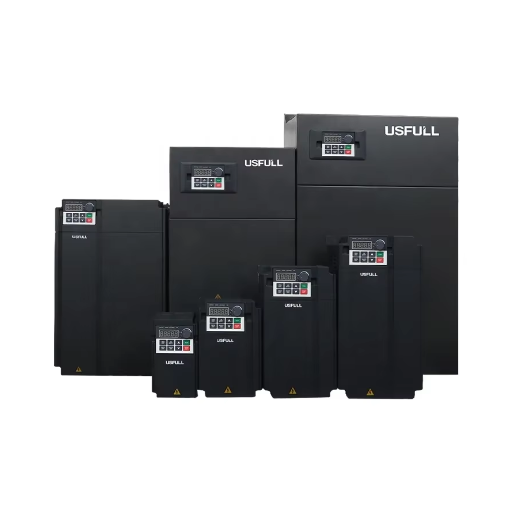
The entire world is moving towards eco-friendliness, and increasing the energy efficiency in use continues to be a significant factor in shaping power conversion system market trends. More and more people are calling for the use of green energy sources, and, as a result, the advancement of energy-efficient technologies is happening very quickly. The industrial sector is no exception, and it is in the process of transition to less carbon-intensive operations by spending more and reaping cost benefits. Therefore, fellow innovators, go green!
In the future, it is most likely that artificial intelligence (AI) and machine learning (ML) technologies will play a greater role in power conversion technologies. These technologies, combined with predictive maintenance practices, would be the key to maintaining a very high level of operational efficiency and thus avoiding downtime. Moreover, in terms of market shares, these large customer bases are highly likely to come from the less developed and developing countries. Along with industrialization and infrastructure development, the field as a whole would be directly affected, which, in turn, would significantly affect the pace of change.
Recent Innovations in Frequency Conversion Technology
The primary focus of the most recent advancements in frequency conversion technology has been to support and enable flexible industrial production for the company. A huge step has been made with the fusion of wide-bandgap semiconductors like silicon carbide (SiC) and gallium nitride (GaN), which enable higher power density and faster switching frequencies while reducing energy consumption. Another very important factor is the advancement of digital signal processing (DSP), which has even made frequency converters more precise and capable of being monitored and adjusted in real time. Intelligent frequency converters available to the company feature in IoT; on the other hand, they are receiving a lot of attention because they can perform all remote actions and even handle the entire data analytics to give the user the best of time. All these developments and the spread of technologies offer new energy savings and the possibility of application widening from renewable energy systems to electric vehicle infrastructure, which also brings trends toward more sustainable, more efficient operations.
Global Market Trends: Demand for 50 to 60 Hz Converters
The need for the 50-60 Hz converter has increased, owing to the relentless expansion of industries and the need for equipment compatibility worldwide across different power standards. Since the power grids of many countries operate at either 50 Hz or 60 Hz, reliable frequency converters are the only option for industries to ensure trouble-free operation of their machinery and equipment worldwide. This demand is highest in strategic sectors such as manufacturing, aerospace, healthcare, and renewable energy, where precision and compatibility requirements are very high.
At the same time, renewable energy systems collecting wind and solar power have been widely deployed, which has increased the demand for active jobs to meet the frequency converters’ needs. These new charging stations all need converters to make them efficient and reliable but also able to handle the electricity from the power grid, the demand for such stations hence go through the roof. And in light of that, two reasons have been given: first is the factor that the expanding energy infrastructure investments in the Asia-Pacific regions and Africa that have really helped bolster the interest for the converters and secondly, and highly importantly, we have emerging countries in Asia and Africa whose local industries are coming up with their own captive power plants and thus need converters and also different frequencies. Imminent challenges to the environment leading to stricter regulations have made the industries, even more, is leaving the rest as they focus on their activities. Consequently, the 50 to 60 Hz converter market has a bright future for growth.
Future Prospects and Emerging Technologies
The development of 50 to 60 Hz converters is more predictable, and it is widely thought that their advancement is significantly driven by energy storage systems, smart grids, and renewable energy technology. Solid-state converters and inverter-based systems are considered the primary route to a better, smaller design that will smoothly connect to modern electrical infrastructure. Furthermore, the entry of electric cars and the increasing adoption of decentralized energy generation systems, e.g., solar and wind, are likely to be the primary drivers of the growing need for cutting-edge converter technologies.
Technological advances in materials such as silicon carbide (SiC) and gallium nitride (GaN) are also altering the converter capabilities market, providing better performance and energy usage. Companies that invest most in their R&D in these fields are expected to have a competitive advantage. Apart from that, given the worldwide trend toward carbon neutrality, governments have started providing grants and other financial and legislative support, which create the right conditions for the development of new technologies. The combination of these points of view gives the impression of a market that is highly dynamic and promising for the 50 to 60 Hz converter market, which covers both developed and developing countries.
Reference Sources
Development trends in 50 Hz to 60 Hz frequency converter technology
Key Findings: This article discusses the latest advancements in frequency converter technology, emphasizing their role in shaping the future of power use.
Why convert 50 Hz to 60 Hz power for testing and lab environments
Key Findings: This paper highlights the importance of frequency conversion in laboratory settings to achieve stable, reproducible experimental results. It underscores the need for reliable power supply variations to maintain accuracy in testing environments.
Frequently Asked Questions (FAQs)
What is a frequency converter, and how does it work?
A frequency converter is traditionally a machine that changes the frequency of an electrical supply from one value to another. So it is possible to convert 50 Hz to 60 Hz and vice versa; appliances manufactured for one frequency will still work if operated at a different frequency. The converters may use different voltages—single-phase or three-phase diode rectifiers, depending on the scenario. Their main impact is felt in the industry, where they set the motors running at the correct speed. Frequency converters, besides motor control, also play a key role in several other applications, such as running heavy-duty industrial loads when the grid voltage is low.
Can I use a 50Hz appliance on a 60Hz power supply?
Using a 50 Hz device on a 60 Hz power supply can be difficult and cause operational problems. 50 Hz appliances may operate faster when plugged into a 60 Hz-supplied area, which might lead to overheating or a decline in service life (especially heaters, occasionally power tools, and 3-phase motor equipment). A frequency converter is required to operate the appliance correctly and securely. Outlet receptacles in countries like Malaysia, Belize, and some parts of the United States have a history of operating the power at 60Hz very stably and indirectly. This accommodates 50Hz appliances, although the indications for such appliances can vary. Voltage converters will always be needed to adjust voltage differences, e.g., converting 220V to 110V. Devote a few minutes, and go through the specifications word by word to make the process smooth.
What is the difference between single-phase and three-phase frequency converters?
Primarily, there is a difference in the design and use of one-phase and three-phase frequency converters. Single-phase converters, for example, are mainly used with smaller loads, such as home appliances, while three-phase converters are primarily used in larger industrial applications, offering more power and efficiency. Three-phase frequency converters can handle heavier loads and are thus frequently used to power motors that require a very stable output. Inverter selection should be determined by the available power supply and the kind of using appliances or equipment. Knowing these differences can help you a lot in your future decision-making.
How do I convert 220V 50Hz to 110V 60Hz?
Transforming 220V 50Hz to 110V 60Hz requires two different types of electronic devices: one for the voltage and the other for the frequency. The voltage-converting device will convert 220V to 110V, and the frequency-changing device will provide two alternative outputs: 50Hz and 60Hz.
Those two changes at the same time are the determining factor for the safe and effective operation of the 110V 60Hz appliances in your 220V 50Hz local grid. The significant problem arises when the converter does not match the device’s or the load’s power correctly. It’s about safety: otherwise, an overload may occur, leaving you with damaged equipment. In all cases, without exception, you must always go through the user manual and adhere to the manufacturer’s instructions that come with the equipment.
